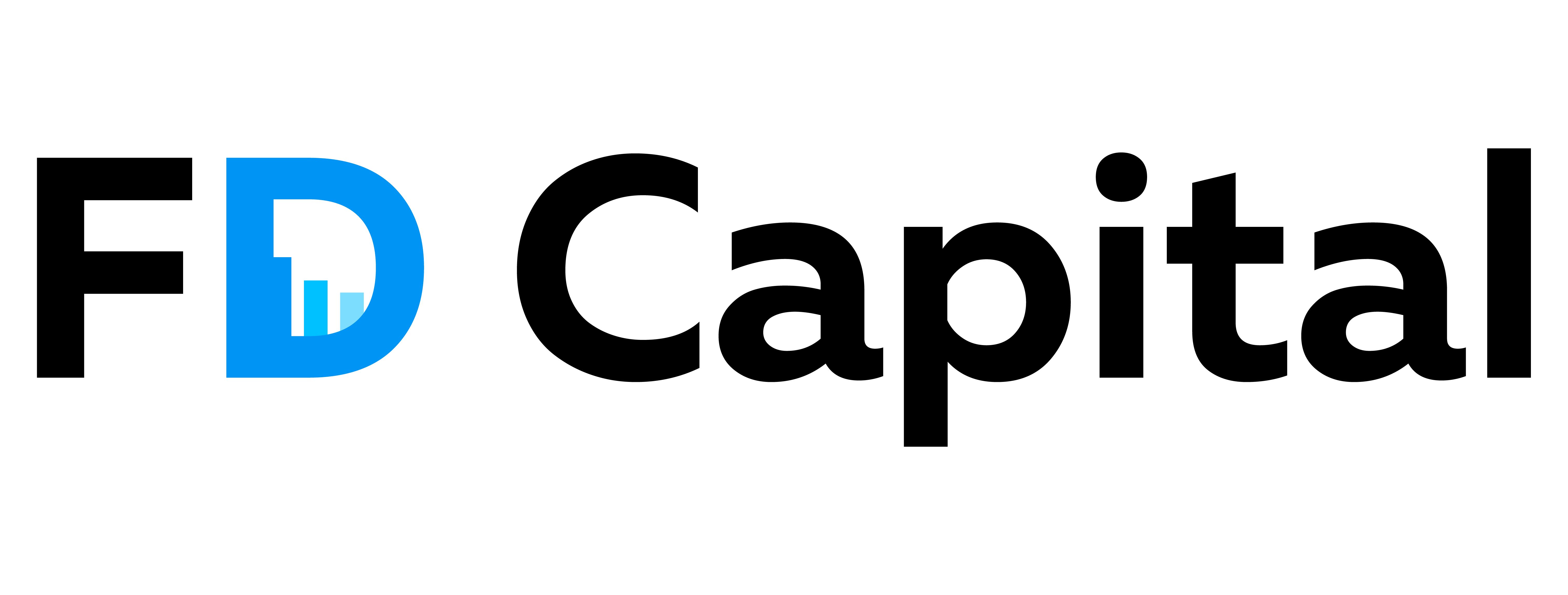Controlling Business Costs in the Current Tougher Times

Controlling Business Costs in the Current Tougher Times
Business costs are one thing that’s keeping CFOs up at night. Controlling business costs during tougher times is crucial to ensuring survival and continued growth. CFOs across every industry are developing cost optimisation strategies to navigate the current macroeconomic uncertainties and geo-political situation.
The pandemic showcased the importance of being ahead of the curve and acting proactively to sustain business stability or growth. One of the best ways companies can control business costs is by recruiting a CFO on a part-time or full-time basis, whether in person or remotely.
CFOs play a fundamental role in controlling business costs through cost optimisation, including identifying cost-saving methods and creating value throughout the company.
Hiring a CFO is an investment that pays for itself. They engage with every aspect of the business, putting them in a unique position to develop a business cost-saving strategy that creates value instead of destroying it.
Ways that CFOs can control business costs include introducing expense management systems and taking a new approach to investing in digital systems. Technology should be viewed as an enabler of growth, rather than solely an operational cost.
We’re examining how CFOs are controlling business costs to enable companies to navigate their way through the current tougher times.
What is Cost Control? Controlling Business Costs
Cost control is a method of reducing the running costs or expenses of a business by managing financial data to maximise value. CFOs will consolidate data to provide a real-time cost analysis to prevent overspending and minimise costs.
Controlling business costs can enable CFOs to track progress, including KPIs. Implementing management systems allows for corrective action if costs exceed budget measures. This strategy ensures that expected profit margins can be achieved, even during times of economic uncertainty and rising everyday costs.
Cost control makes it easier for CFOs to achieve financial transparency with stakeholders, investors, and clients. While controlling costs is important during the current economic situation, it also produces insightful metrics for future planning.
CFOs with a cost control budget in place can provide advice on how to maximise value from situations like employee retention and project timelines. Choosing and monitoring KPIs to determine project performance ties in with budgeting to control business costs.
Knowing Your Business Costs
CFOs cannot blindly cut costs in a bid to navigate through the rocky waters of the current economic uncertainty. While cost-cutting can lead to adverse consequences and cause more damage to the company’s standing in the long run. A CFO will start the process of controlling business costs by examining the company’s finances over the previous 6-12 months, including variable spending.
Business costs that are often overlooked include one-off and variable spending, such as commissions, discretionary spending, and optional employee training. Examining the company’s finances over 12 months will provide a baseline estimate for such variable spending.
Not all these variable costs, particularly employee commission, can be cut. However, it’s still vital for the CFO to account for these in their forecasting and cost management strategy.
Operating an expense management system enables CFOs to identify and list variable spending categories to keep on top of reporting. This system ensures that every expense is accurately reported to enable future forecasting and planning.
Starting the process of controlling business costs by establishing an expense management system enables CFOs to identify the highest costs that can be reduced while creating the minimum impact on business operations.
Why CFOs Need Real-Time Visibility
A 2018 survey by the Economist Intelligence Unit found that more than 60% of CFOs lacked total visibility of their company’s spending. Real-time visibility is vital for preventing unnecessary spending, including duplicate purchasing, and ensuring the company is receiving the best price. Implementing real-time visibility allows for negotiations with partners, including those within the supply chain.
Enabling real-time visibility means that CFOs no longer have to wait until credit card statements and expense reports arrive on their desk to have oversight of spending. Real-time visibility empowers CFOs to reprioritise spending in the case of overspending and to reallocate money in the event of an economic event.
It enables CFOs to identify unnecessary subscriptions and find potential cost-saving options, such as consolidating licenses for software applications. Controlling business costs involves implementing sustained changes that maximise value without minimising productivity.
Financial Analysis with Real-Time Data
Financial analysis and strategy development can only happen when CFOs have access to real-time data. A CFO can consider potential scenarios for controlling business costs by using real-time data for the most accurate analysis.
This data is also vital for companies within the SaaS industry that typically operate with a yearly indexation clause. CFOs can begin the process of controlling business costs by reviewing previous contracts and enforcing the indexations where possible to reduce costs.
Long-term supply contractors can also be negotiated with by the CFO to implement more reasonable payment terms or unit pricing. Newly recruited CFOs will want to review these relationships and related costs to develop an expense management system. This information provides the CFO with the insight they need to negotiate for the best pricing.
Creating Value Through Controlling Business Costs
Many companies took a knee-jerk reaction to the pandemic by drastically reducing costs. CFOs have learnt the lesson of optimising costs to create value versus widespread cost reduction. The pandemic has taught us lessons on how to adapt business practices and models overnight, including cost structures.
While cutting expenses to the bare minimum can work for survival in the short term, it inevitably creates a negative impact on the company’s productivity and operation. CFOs must balance controlling business costs with creating sustainable growth to future-proof the company.
For example, an e-commerce business may be tempted to control business costs by choosing slower and more affordable shipping options as default for its customers. While this will save the company capital, it will lead to lower customer satisfaction and will likely have a knock-on effect on customer loyalty and repeat orders.
Digital investment is one way to create value by controlling business costs. These investments can create stability and provide opportunities for sustained growth. CFOs have to provide a value equation when deciding what technology provides the best value and where savings can be made without negatively impacting operations.
Data centres are one potential area for business cost controls. Companies that leave their data centre applications running around the clock can be spending more energy and capital than necessary. Data centres now account for 1% of the world’s electricity usage as one of the fastest-growing electricity consumers globally. Real-time visibility will enable CFOs to determine whether the company’s data centre is overprovisioned and if costs can be reduced without impacting output.
Best vs. Worst Case Financial Forecasting
CFOs hoping to control business costs during the current economic instability need to implement best and worst-case financial forecasting. This forecasting will allow CFOs to plan for every possible scenario depending on how the numbers stack up.
It’s necessary to have worst-case scenarios built in to create expectations of what factors may need to be reviewed in the case of economic instability and a reduction in capital. This forecasting may include provisions for reducing employee working hours or delaying future projects. CFOs will want to implement worst-case financial forecasting that avoids drastic adverse consequences.
Best and worst-case financial forecasting should also include ‘rebound’ planning to ensure the company is ready to bounce back when the economy inevitably recovers. The lessons from the pandemic have taught us that this rebound planning should include engaging with any furloughed employees and having a marketing plan on standby for a return to normal service if it’s been impacted.
A CFO’s financial forecasting will empower the leadership team to develop a realistic strategy to quickly transition in the event of any economic turmoil or financial downturn.
How AI and Automation Can Control Business Costs
It’s a common misconception that controlling business costs means cutting investments. Some investments can reduce business costs and boost productivity. AI and automation fall into this category.
IT is increasingly becoming a black hole for company finances. Eliminating resource waste should be done to improve value without impacting performance and productivity. Achieving the highest performance possible is vital to giving companies a competitive edge, particularly in innovative industries or ones focused on research and development.
‘Green computing’ is a buzzword that CFOs should be familiarising themselves with. While its focus is on reducing carbon emissions through lower energy consumption, it can also enable CFOs to control business costs. CFOs should view performance as the driving factor in ensuring cost optimisation within their IT and digital investments.
AI and automation can provide real-time insights into factors that impact business operations, including external factors that can be time-consuming to analyse. Investing in automation can save time by providing instant insight into key trends and patterns.
Cost optimisation does not mean that CFOs must embark on major cost-cutting. Instead, they should examine the transformation potential of IT systems and processes. Can vehicles be switched to electric vehicles such as Tesla? How can these systems be adapted to provide more efficiency? What IT systems are enabling the company to scale in line with future growth, particularly in line with any rebound strategy?
While removing faster shipping systems may reduce costs by 10%, it can lead to greater customer dissatisfaction and have a knock-on effect on the company’s reputation and returning customers. CFOs can use automation and AI to find a balance between maintaining operations and maximising efficiency to prevent waste.
Automation is vital to creating robust forecasting and enabling the company to behave proactively to external and internal changes. A successful cost optimisation strategy can respond to external factors without delay.
The pandemic showcased the importance of AI and automation investment in allowing companies to address immediate challenges. A CFO’s priority should be on creating long-term value in investments, rather than cutting costs to hit a pre-determined number.
Pressing ‘Pause’ to Support Cost Management
Being able to press ‘pause’ on business activities can support cost management, especially in worst-case scenario planning. Business activities that don’t impact the daily operations – including marketing re-branding and office recordation – can be put on hold to save costs causing immediate adverse consequences.
Cost management enables CFOs to examine whether additional spending is necessary and determine the value of expenses. If employees are increasingly switching to remote working, it means office redecoration or IT investment will deliver a lower reduction on investment than providing employees with equipment for their home offices.
Other costs that can be paused or put on hold include attending trade shows, recruiting entry-level positions, and discretionary bonuses.
The Future of the Business
One crucial factor that is overlooked when implementing cost optimisation is the future state of the business. Companies need to be forward-thinking with their cost savings, thinking of tomorrow and not just today’s survival. Repositioning investment may save significant costs, but an alternative should be explored to ensure sustained growth in the future.
Changing factors also means CFOs need to disregard irrelevant data that no longer applies to the company going forward. A company that has switched to remote work post-pandemic will no longer maintain the same operating costs as it had pre-COVID.
Keeping track of real-time spending enables CFOs to predict future trends and adjust business operations accordingly to minimise operational disruption. Understanding trends – and their impact on the future of your business – are vital for ensuring that the company is implementing the correct strategy and cost optimisation planning.
Controlling Business Costs with a CFO
Recruiting a CFO is an investment that pays for itself. The rise of remote and part-time CFOs makes it financially viable for companies at every stage to benefit from a CFO, whether they’re a pre-revenue start-up or experiencing rapid growth. FD Capital is the leading financial recruitment agency for connecting companies with CFOs through headhunting and traditional recruitment methods.
Control your business costs in the current economic downturn by recruiting a part-time or full-time CFO to manage your company’s financial health. Start the recruitment process today by contacting our CFO headhunting team at recruitment@fdcapital.co.uk.

Adrian Lawrence FCA with over 25 years of experience as a finance leader and a Chartered Accountant, BSc graduate from Queen Mary College, University of London.
I help my clients achieve their growth and success goals by delivering value and results in areas such as Financial Modelling, Finance Raising, M&A, Due Diligence, cash flow management, and reporting. I am passionate about supporting SMEs and entrepreneurs with reliable and professional Chief Financial Officer or Finance Director services.












